REVIEW: Body So Fluorescent at Buddies in Bad Times
The art form of drag can be freeing, subversive, and fun, allowing performers to examine their relationships with social constructions of gender and break societal “rules” many argue should never have existed in the first place. Though some lawmakers in the US are doing their best to ban this innocuous form of entertainment, drag doesn’t harm children or ruin families. Even so, potential harm can be done when one person from a marginalized group “tries on” the identity of a person from another marginalized group, a tourist to a lived experience that isn’t their own, and a culture they cannot claim. This conflict lies at the heart of Amanda Cordner and David di Giovanni’s Body So Fluorescent at Buddies in Bad Times, which chronicles a friendship’s destruction in the wake of such protracted, appropriative actions.
Body So Fluorescent began as a 25-minute show at Buddies’ experimental Rhubarb Festival in 2016. In the intervening seven years, it has expanded to an hour-long piece that explores what it’s like to wear identity as a costume.
The show begins joyfully, with a drag performer who strides confidently down the centre aisle of the audience to take over the stage (Sanjina Dabish Queen in the first week; Kenya Rami takes over in the second). This crowd-warming use of drag is the raucous celebration we’re used to, featuring pulse-pounding music, acrobatics in dangerously-tall heels, and bouncing rhinestones, eliciting cheers from an excited audience.
Writer/performer Cordner, on the other hand, changes the tone immediately upon entry, looking decidedly the worse for wear. The character who stumbles on stage has morning-after raccoon eyes resolving into mascara smears down both cheeks, and a bleached blonde weave that’s partly pulled out, giving it the appearance of a long fringe surrounding a crown of black hair. Even the cheerful clubwear, a glittering blue bikini under a mesh dress (costumes by company madonnanera with Rachel Forbes), looks decidedly out of place in the bleak light of day.
This, we learn, is the aftermath of “Shenice,” a persona that Cordner refers to in the third person, an alter ego who’s the life of the party. Confident, bold, and brassy, Shenice opens up club doors and parts crowds; everyone wants to dance up on her — when she’s not starting dramatic fights. Shenice is completely different from the shy, apologetic person within, who sheepishly details involved therapy sessions and seems shellshocked at the results of Shenice’s behaviour: Shenice’s best friend Desiree left in the wake of some particularly epic theatrics, and she’s not answering her phone.
In Cordner’s capable hands, the Jekyll and Hyde situation starts to seem like a sort of demonic possession. Shenice begins to emerge at random and unprovoked intervals, some sort of unseen hand forcing her to gyrate and catcall at will. The physical difference is remarkable, as Cordner seems to expand and contract with each change. That’s not the only change we see, however, as it turns out that Shenice not only isn’t who she thinks she is, but she’s not who we think she is, either.
Eventually, we get the weary best friend’s side of the story, and find out that it’s way more complicated than just a drunken bar fight, loaded with issues of race, class, gender, and sexuality. Cordner’s portrayal of Desiree here is again vastly different, less outsize and more realistic and constrained, showing the fatigue of living a life under the weight of stereotype warring with anger and love for her friend. She wonders: what was it about this time that was different? Why did she snap? And should she smooth the troubled waters once again, or just row the boat the hell off the ocean?
Body So Fluorescent has a lot in common with Canadian Stage’s recent production of Jackie Sibblies Drury’s Pulitzer Prize-winning Fairview, which also deals incisively with the disturbing tendency of white people, particularly those steeped in Black entertainment, to want to perform their own parodic appropriation of Blackness as a way of claiming the “fun” parts of culture without dealing with the associated oppression. Similar to Fairview, it’s very difficult to write about Body So Fluorescent without spoiling some impactful reveals.
However, where the shows differ is in the intimacy of the relationship between the appropriator and injured party. Fairview’s commentary is a broader societal indictment featuring unrelated groups, allowing it to be a more outrageous satire. Body So Fluorescent, conversely, showcases a single intimate relationship and therefore explores the more complicated and painful betrayal of a trusted confidante, particularly one who thinks the performance is a tribute, rather than an insult.
The characters in Cordner and di Giovanni’s play know each other deeply, and bring joy to each other’s lives, even when one realizes the relationship has become more and more lopsided. Desiree slowly comes to the realization that she has become more of a place of refuge than an equal participant in the friendship; in one of the play’s snappier lines, she uses a metaphor to describe her role as no longer even the secondary character, but the car that the main character uses to escape.
As a whole, the script is biting and descriptive, ably evoking the scattered moments, confusion, and frustrations of a night out fraught with expectations that you might barely remember — or not want to remember. These descriptions are aided by Rebecca Vandevelde’s lighting design and set, which is studded with no less than five disco balls and uses large strips of plastic wrap to simulate the feeling of pushing through the suffocating crowds at a club you wish you hadn’t entered. Most of the referenced songs aren’t actually played, but the music by sound designer Steven Bowa manages to evoke popular club hits while maintaining originality, often seeming like it’s coming from another room at the edge of your consciousness.
The relationship between the characters is complicated, but also achingly familiar. The playwrights allow you to feel sympathy for both friends, while unambiguously showing that one has gone too far, not being fully able to understand why. The depth of the situation leaves you with satisfyingly unanswerable philosophical questions, though a strange, mysterious epilogue out of character with the rest of the show raises more questions than necessary.
Most of the time, wearing a costume and pretending to be a character is harmless fun. In Body So Fluorescent, though, we see its ups and downs: from celebratory, life-affirming performance, to nothing but a drag.
Body So Fluorescent runs at Buddies in Bad Times until April 23. Tickets are available here.

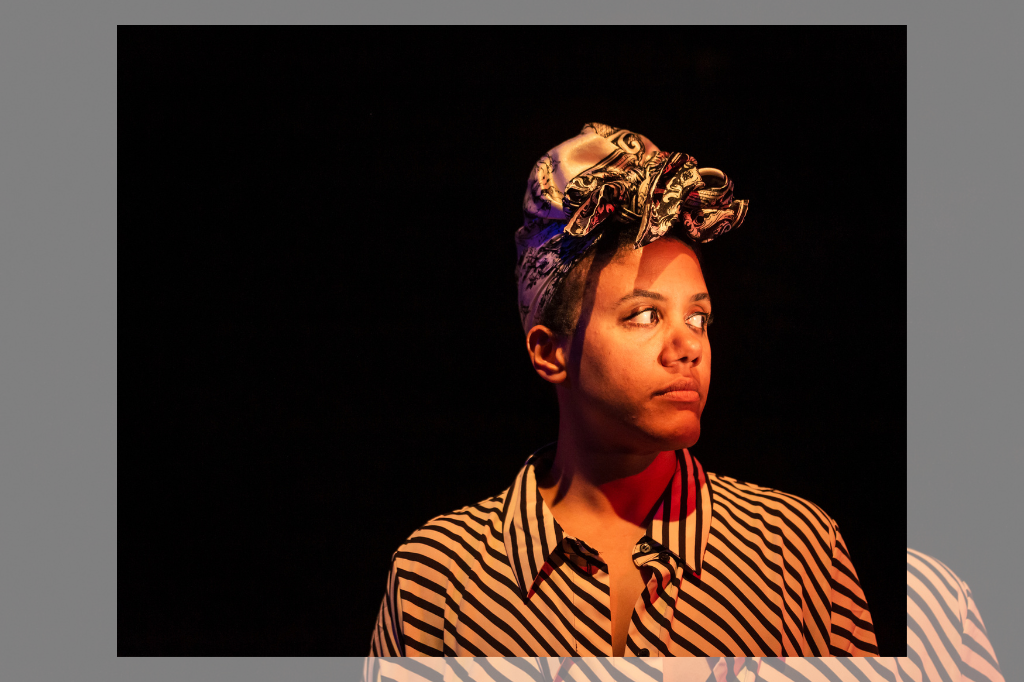








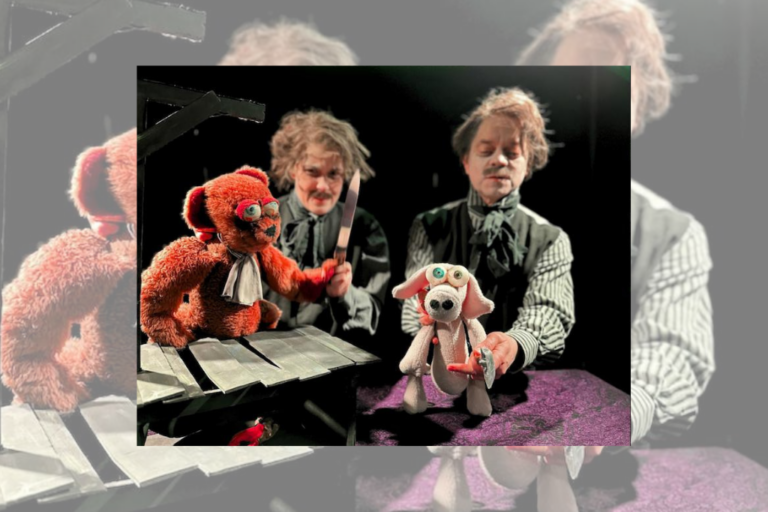
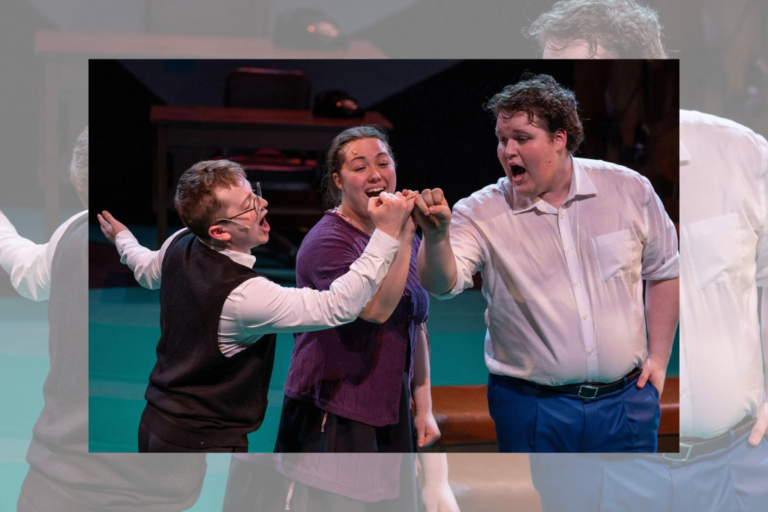
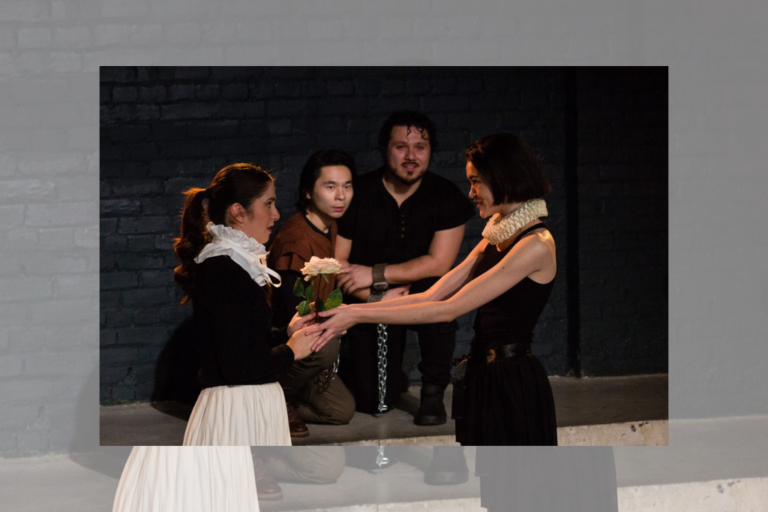
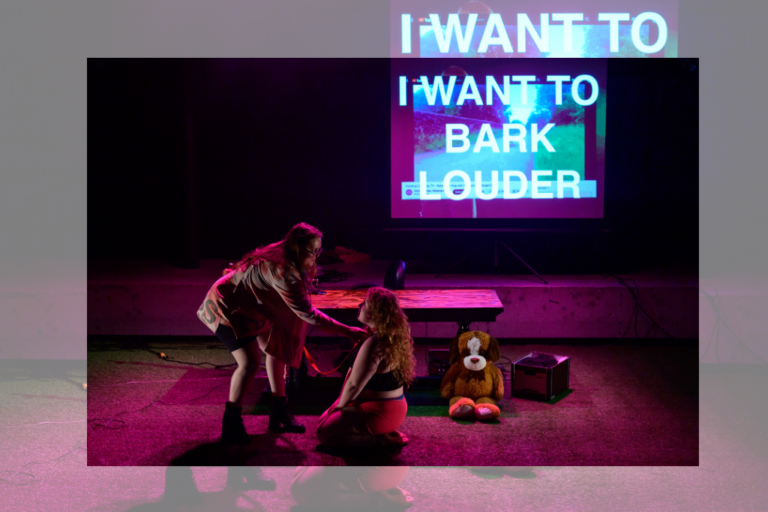

Comments